#irish mythology
Text
more people need to know about irish mythology. it's just balls to the walls insane. if you thought greek mythology was wild let me introduce you to:
nessa and her 12 gay dads
queen medb cheating on everything and everyone, starting a war over a cow, ruining innumerable lives and then getting killed by cheese
fionn gets raised by 2 random lesbians
fionn kills a guy for stealing his girlfriend, drops the magic healing water several times on purpose
oisín goes to live in the immortal fairy land with his immortal fairy wife, misses ireland, comes back to visit, falls off his horse and fucking dies (may or may not have gotten in a fight with saint patrick before dying)
fuck them kids, they're swans now
guy accidentally gets job of "being the king's dog" at age 5, changes name to dog
3K notes
·
View notes
Text
Sometimes I approach my shrines and just sort of stand there. Like, I don't pray, make offerings, or anything. I'll just stand there and look at it. Or sit next to it.
For a while, this made me feel strange and a little guilty, even. But now I look to how I do similarly with my parents. I'll just go and sit quietly with them, or go lean on them. Just take comfort in their presence.
The Gods ARE our divine parents, after all.
#hellenic deities#hellenic polytheism#pagan#hellenismos#greek polytheism#hellenic gods#altar#irish paganism#polytheism#irish mythology#celtic paganism#celtic polytheism
429 notes
·
View notes
Text
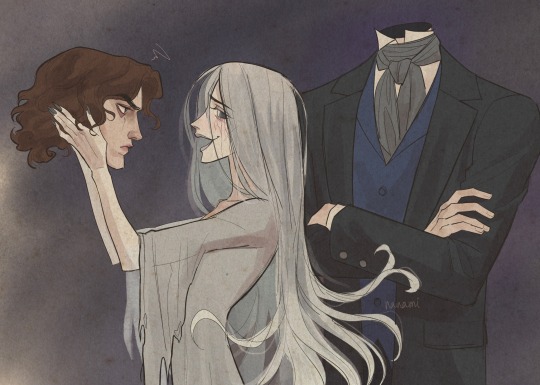
samhain 🧡 a banshee & a dullahan
#oíche samhna#happy halloween#irish folklore#samhain#éire#banshee#dullahan#halloween#irish fae#artists on tumblr#my art#original art#irish#irish mythology#ireland#mythology#celtic#ealaín#celtic mythology#celtic art#irish art#art#drawing#illustration#sketch#gaelic#gaeilge#autumn
949 notes
·
View notes
Text
#medieval irish#irish mythology#tain bo cuailnge#toruigheacht gruaidhe griansholus#i don't think i can even remember all the tags for this#togail bruidne da derga#i should make a tag for my medieval polls#medieval polls
2K notes
·
View notes
Note
please share the setanta gossip video you put on IG here, i know the tumblr nerds will appreciate it and i want to share it with them 💚
ÚÚÚÚÚÚÚÚ yass
d'athraigh setanta a ainm? slé!
#físeán#vid#gaeilge#gaeilgeblr#blocblr#irish#bloc tg4#irish language#irish langblr#bloctg4#tg4#meme#sketch#irish mythology#irish history#setanta#cu chulainn#cú chulainn#táin bó cúailnge#an táin#irish folklore#mythology#celtic#celtic mythology#folklore
1K notes
·
View notes
Text
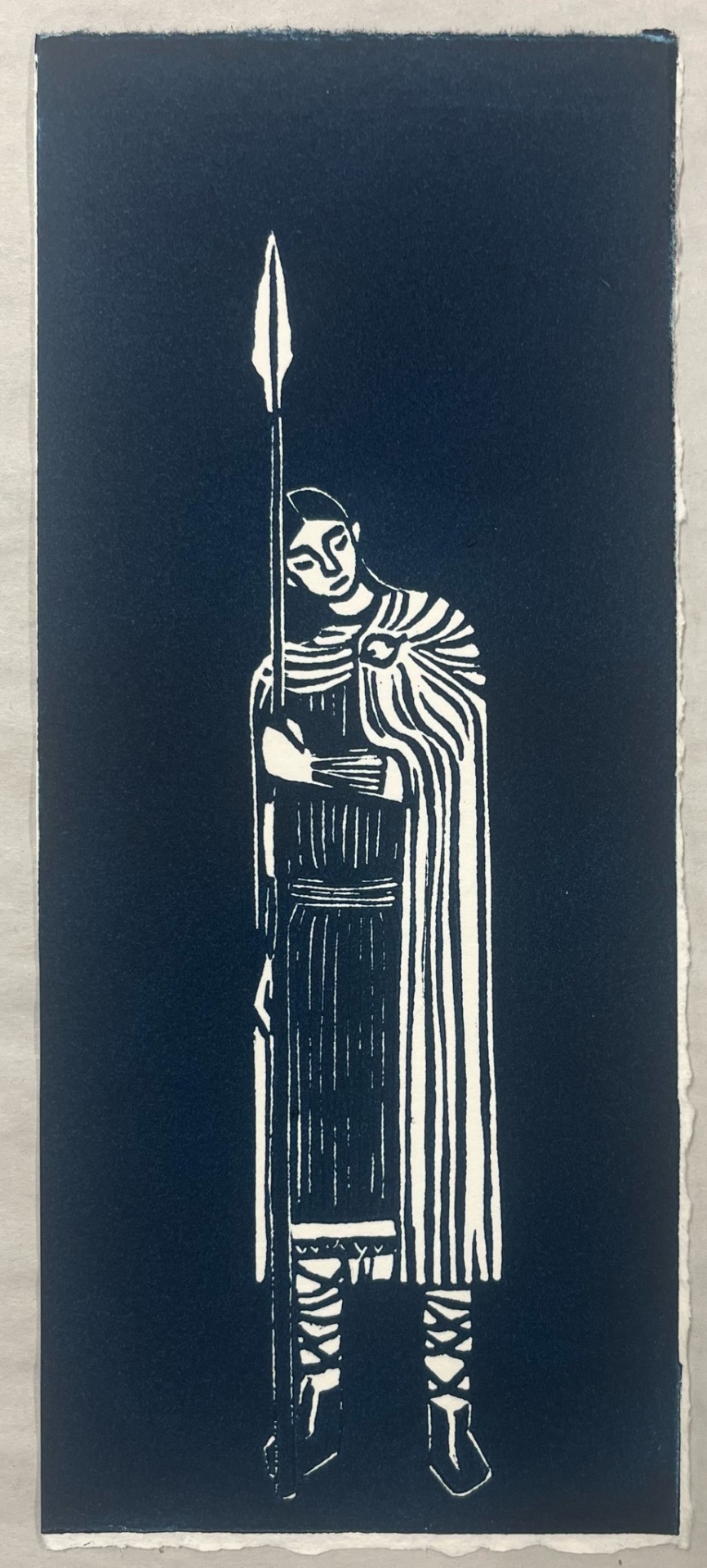
hi more ulster cycle art based on this passage: “From the Monday after the feast of Samain at summer’s end to the Wednesday after the feast of Imbolc at spring’s beginning, Cúchulainn never slept — unless against his spear for an instant after the middle of the day, with head on fist and fist on spear and the spear against his knee” - táin bó cúailnge tr. thomas kinsella
#i feel like when i read the tbc i constantly seesaw back and forth between “haha he’s only 17” and “oh my god he’s only 17”#this is one of the latter moments#my art#art#me#ulster cycle#tain bo cuailnge#cu chulainn#linocut#irish mythology
272 notes
·
View notes
Text
Important Facts about Samhain from an Irish Celtic Reconstructionist
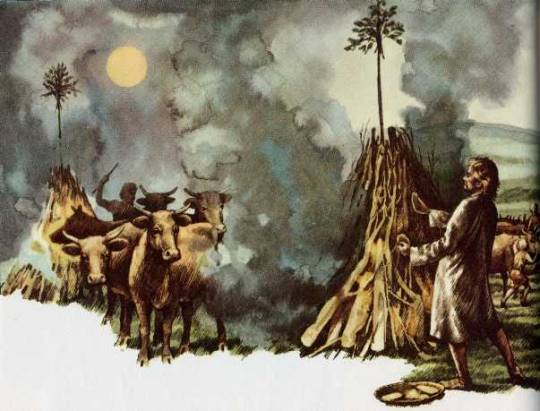
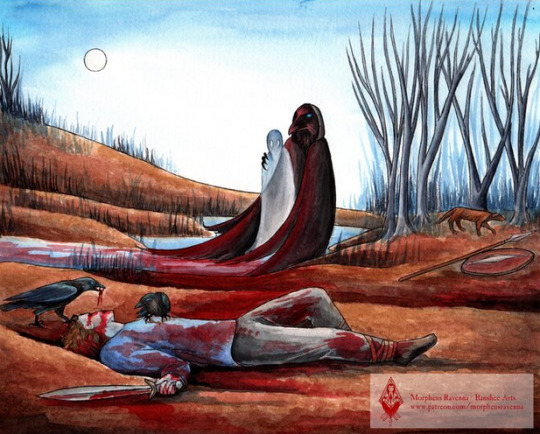

Pronunciation
SOW-in or SOW-een ~NOT~ Sam-han, Sam-win etc.
Dates
Most reconstructionists celebrate Samhain on Oct 31-Nov 1, however some may choose to celebrate on Gregorian Nov 13-14 as this would match the Julian dates of Oct 31-Nov 1. Some also believe that it was a three day festival spanning Oct 31- Nov 2 on which Nov 2 is specifically devoted to ancestral veneration, but there is no specific evidence of this, only possible extrapolation from more modern practices.
Following the Celtic method of days beginning at sunset, regardless of the specific dates you choose to celebrate on your festivities should begin at sunset and end at sunset.
Importance in the Mythos
Ná Morrighan has a strong connection to this time of year thanks to the story of Cath Dédenach Maige Tuired (The Last Battle of Mag Tuired) in which she is found depicted as the ‘Washing Woman’ (sometimes washing herself in the river and other times washing the bloodied armor of the soldiers that would die that day), on the eve of the battle which is also Samhain. The Dagda approaches her and couples with her (creating the ‘Bed of the Couples’ along the bank of river and granting Dagda her blessing in the battle to come). This encounter seems to over emphasize the liminality of the encounter by taking place during the changing of the year and with the couple each standing with ‘one foot on either bank’ of the river.
She and her sisters (Badb and Macha) then use various forms of magic to rain destruction on their enemies (in the form of fire and blood). After the day is won Morrighan speaks a prophecy that describes what is taken by some to be the end of days and others to be the events which will later lead to the Ulster Cycle.
Beneath the peaceful heavens lies the land.
It rests beneath the bowl of the bright sky.
The land lies, itself a dish, a cup of honeyed strength, there, for the taking, offering strength to each
There it lies, the splendour of the land.
The land is like a mead worth the brewing, worth the drinking.
It stores for us the gifts of summer even in winter.
It protects and armours us, a spear upon a shield
Here we can make for ourselves strong places, the fist holding the shield
Here we can build safe places, our spear-bristling enclosures.
This is where we will turn the earth. This is where we will stay.
And here will our children live to the third of three generations
Here there will be a forest point of field fences
The horn counting of many cows
And the encircling of many fields
There will be sheltering trees
So fodderful of beech mast that the trees themselves will be weary with the weight.
In this land will come abundance bringing:
Wealth for our children
Every boy a warrior,
Every watch dog, warrior-fierce
The wood of every tree, spear-worthy
The fire from every stone a molten spear-stream
Every stone a firm foundation
Every field full of cows
Every cow calf-fertile
Our land shall be rich with banks in birdsong
Grey deer before Spring
And fruitful Autumns
The plain shall be thronged from the hills to the shore.
Full and fertile.
And as time runs its sharp and shadowy journey, this shall be true.
This shall be the story of the land and its people
We shall have peace beneath the heavens.
Forever
(based on the translation by Isolde Carmody)
It is also mentioned in Echtra Cormaic that on this festival every seven years the high king would host a feast, it was at this time new laws could be enacted. (but it seems that individual Tuathas or possibly kings of the individual providence may have done this for their territories at Lughnasadh).
It seems to be a time considered especially susceptible to (or of) great change as it is the time which the Tuatha de Danann win victory over the Formorians and take control of Ireland, the invasion of Ulster takes place at this time in Táin bo Cúailnge, in Aislinge Óengusa Óengus and his bride-to-be are changed from bird to human and eventually he claims kingship of Brú na Bóinne at this time of year.
Celebration Traditions
Samhain is the beginning of the “dark half” of the year and is widely regarded as the Insular Celtic equivalent of the New Year. The “dark half” of the year was a time for story telling, in fact in this half of the year after dark is considered the only acceptable time to tell stories from the mythological and Ulster cycle (the Fenian cycle being assumed to be no older than the 12th century based on linguistic dating). Traditionally anything that had not been harvested or gathered by the time of this festival was to be left, as it now belonged to the Fae (in some areas specifically the Púca).
This was also an important time for warding off ill luck in the coming year. Large bonfires would be built and as the cattle were driven back into the community from the pastures they would be walked between these bonfires as a method of purification (the reverse custom of Bealtaine where the livestock were walked between the fires on their way out to the summer pastures). Assumed ritualistic slaughter of some of the herd would follow (though this perhaps had the more practical purpose of thinning the herd before the winter and creating enough food for the feasting). In some areas the ashes from these fires would be worn, thrown or spread as a further way to ward off evil.
Homes would be ritualistically protected from the Aos Sí (Fae or ‘Spirits’) through methods such as offerings of food (generally leaving some of the feasting outside for them), carving turnips with scary faces to warn them off (we now tend to do this with gourds), and smoke cleansing the home (in Scottish saining) traditionally with juniper, but perhaps rowan or birch might be an acceptable alternative. It is likely these would be part of the components used in Samhain bonfires as well, for the same reason.
Lastly based on later traditions as well as links in the mythology this is a time where divination practices or those with the ‘second sight’ were regarded to be especially potent.
Art Credit @morpheus-ravenna
#samhain#irish#irish mythology#irish polytheism#irish paganism#celtic reconstructionism#celtic paganism#celtic polytheism#na morrigna#the morrígan#the dagda#fire festival#blackcrowing#Irish reconstructionist
446 notes
·
View notes
Text
See, I personally find this quest to find pagan/pre-Christian elements in Welsh/Irish literature quite unnerving - I don't know about anyone else.
There's something to be said about genuinely discovering pre-Christian elements in a narrative or story and that being where evidence and study has led you. But I see some people on this fruitless quest to find pagan elements in very Christian texts and sometimes it feels like if no pagan elements can be found, people start making stuff up out of whole cloth - and that can be very dangerous for already not-well known texts in minoritised languages!
There's already so much misinformation out there about Irish/Welsh texts and literature in general - so it hurts to see people carelessly adding to the misinformation either out of ignorance or lack of respect for the source material.
I promise you the source material being Christian doesn't ruin it - you can in fact, enjoy these myths without making them into something they're not!
#I feel like general ire towards (particularly) colonial Christianity has informed how people think of and view anything that is associated#with Christianity - and ire towards some of the ills committed in the name of Christianity is very valid actually#but what it isn't is approaching any text written in a Christian context and immediately disregarding it for having anything unique or#insightful to say. And in a Celtic languages context#this can be especially othering and almost fetishistic of an imagined pagan Ireland and Wales which was 'covered up' by Christianity#and that desire for people outside of Ireland and Wales to impose a kind of 'pagan faerie culture' onto the modern countries directly feeds#into false depictions of Ireland and Wales as 'lost in time' or as magical places full of latent pagan culture &c. which can be really#damaging in its own way against people who live in Wales or Ireland or who speak Welsh or Irish#this goes for other Celtic speaking nations too like Scotland Brittany Isle of Man and Cornwall#But Wales and Ireland tend to be the most focused on for this kind of treatment#luke's originals#Welsh#Wales#Cymblr#Irish#Ireland#welsh mythology#irish mythology#irish literature#welsh literature#Arthurian legends#arthurian literature
323 notes
·
View notes
Text

Grianstad shona daoibh!
In Ireland, the Winter Solstice is often associated with the Newgrange passage tomb in County Meath. Each year, as the sun rises on the Solstice, it aligns perfectly with tomb to illuminate the passage within.
Lots of historical, scientific and even crazy (I’m looking at you Ancient Aliens) theories exist as to why this occurs, but there is also some stories within our mythology associated with the event, including the Dagda’s affair with the Goddess Boann.
The Dagda was thought to be an Irish god of fertility and strength. A wife of one of his aides, Boann, a goddess of the River Boyne, was particularly entranced, and the couple soon began a clandestine affair. Affairs don’t stay secret when a god of fertility is involved, and Boann quickly fell pregnant around springtime.
Boann resided at Newgrange, and when her husband left for a hunting trip, the Dagda cast a spell to make the sun standstill for nine months and pause time. Boann carried her baby to term and eventually gave birth to Aengus, a god of youth and love. Despite it now being Winter, on Elcmar’s return he felt as if only a day had passed and the affair went unnoticed. That is until one day, when an adult Aengus would eventually arrive to duel Elcmar for Newgrange, which he deemed his birthright.
#irish mythology#artists on tumblr#irish folklore#newgrange#winter solstice#aengus#the Dagda#Boann#celtic polytheism#amylouioc art#my art#celtic mythology#fantasy illustration
235 notes
·
View notes
Text
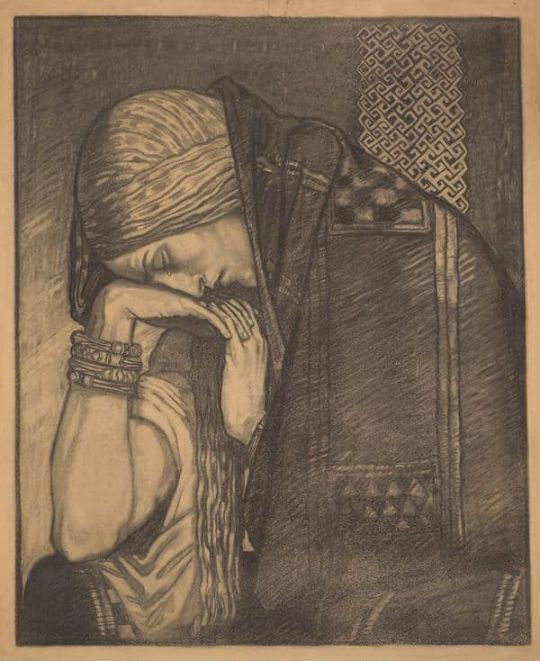
Deirdre of the Sorrows by John Duncan
#deidre#deirdre of the sorrows#irish mythology#celtic mythology#celtic#mythology#john duncan#pre-raphaelite
176 notes
·
View notes
Text
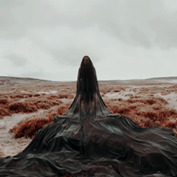
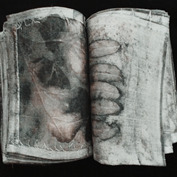



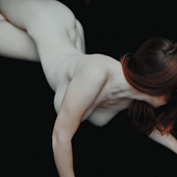
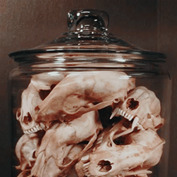


f/f february: carmun & medea
requested by anon
156 notes
·
View notes
Text
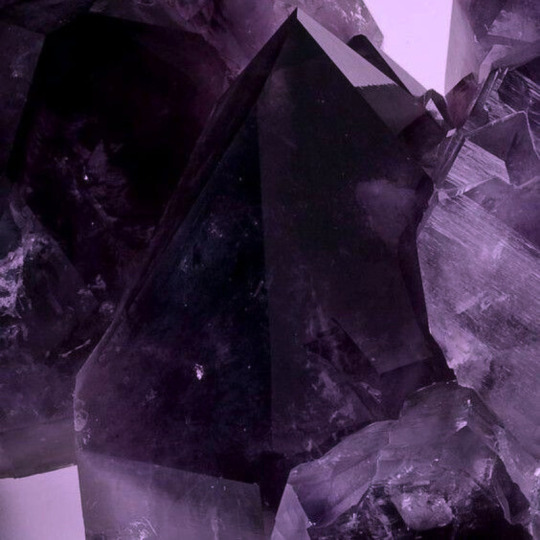
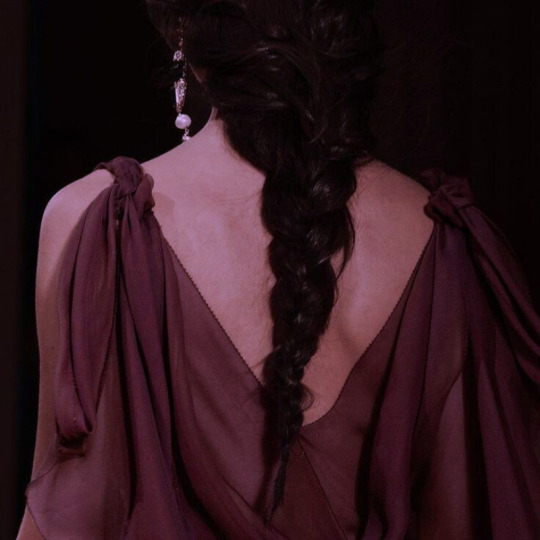


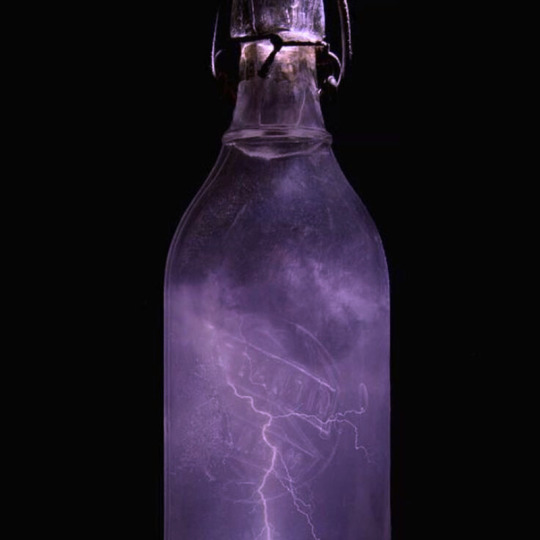
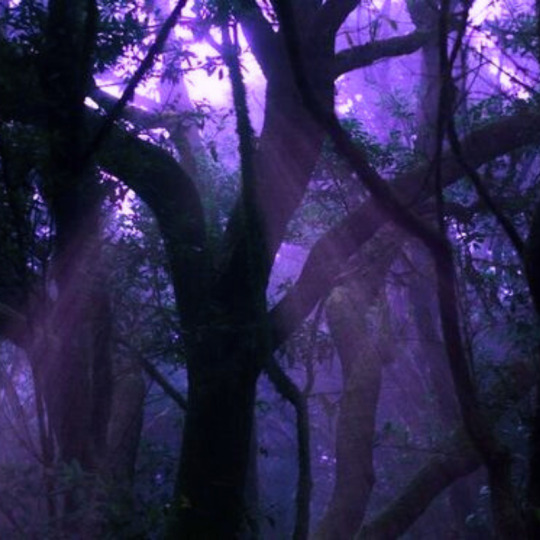

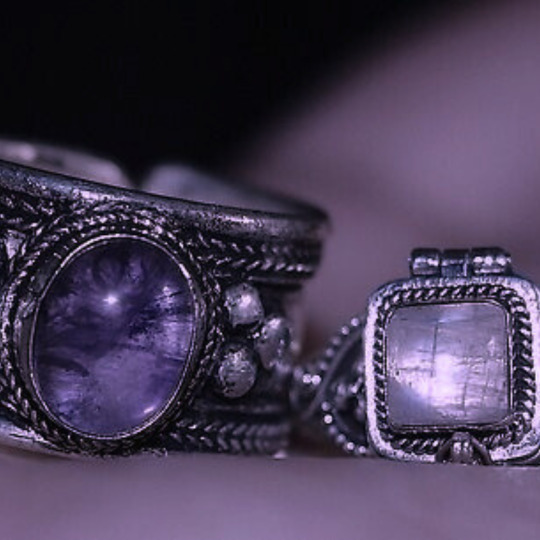

irish mythology: danu
danu is known as the mother of irish gods. she is the mother goddess of the tuatha dé danann – in fact, these supernatural beings take their name from Ddnu, as the name tuatha dé danann translates to ‘the peoples of the goddess danu.' she is strongly associated with nature, as well as regeneration, wisdom, death, and prosperity. it’s thought that she passed on her own wisdom to members of the tuatha dé danann, as well as her creative and crafty talents.
212 notes
·
View notes
Text
90% of the time I'm like "the only reason why the medieval Irish material seems bizarre is because it isn't taught as part of the standard humanities curriculum -- Greek Mythology is just as bizarre, you're just USED to it, stop reducing this stuff to Lol That's So Weird", but then I do have to be like. "Anyway the postulated father god of the postulated pre-Christian Irish pantheon, if ever such a thing existed in a uniform way, creates a zombie apocalypse in one text that allows him to become king of Ireland and his wife is a crow (part time) that commits crimes and castrates a Viking warlord (who has a really messy family life btw). He also has a xylophone made out of corpses in another text." and I have to be like. "Okay, so maybe the Irish texts ARE a little bit. Out there. On occasion."
#for what it's worth though there's still a REASON for these things#the scribes weren't putting them in because Lol Funny#but also...yeah.#Zeus could never#irish mythology#the mythological cycle#the dagda#i should clarify: they weren't JUST putting them in because Lol Funny
171 notes
·
View notes
Text
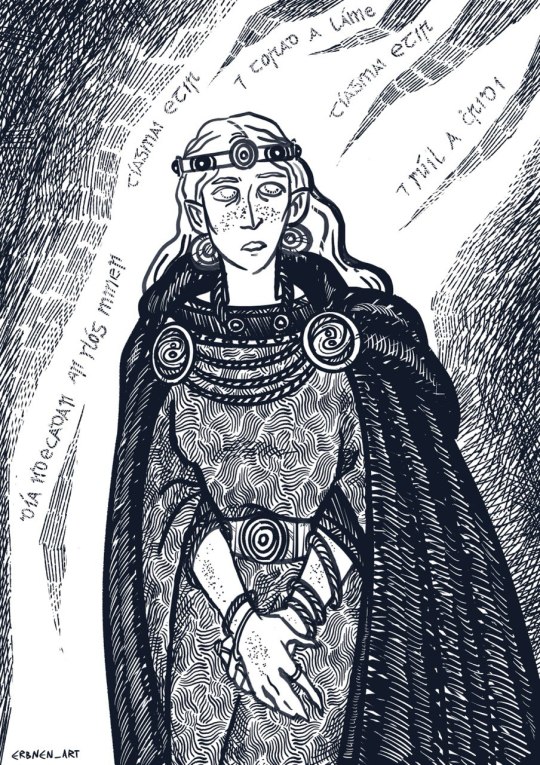
A commission of Brigid for @bloodtreachery (awww, it was SUCH a pleasure to do it!). I put an emphasis on her aspect as a poet, hence the fire of poetry ablaze!
The poem in the flames is a liberal translation of these lines from The Hosting of the Sidhe into Old Irish (courtesy of my wonderful husband):
...if any gaze on our rushing band,
We come between him and the deed of his hand,
We come between him and the hope of his heart.
#artists on tumblr#irish mythology#brighid#brigid#celtic paganism#gaelpol#paganblr#pagan art#illustration#commission#commissions open#tuatha de danann#irish goddesses#goddess brigid#druidism#celtic deities#aodhan erbnen
328 notes
·
View notes
Text
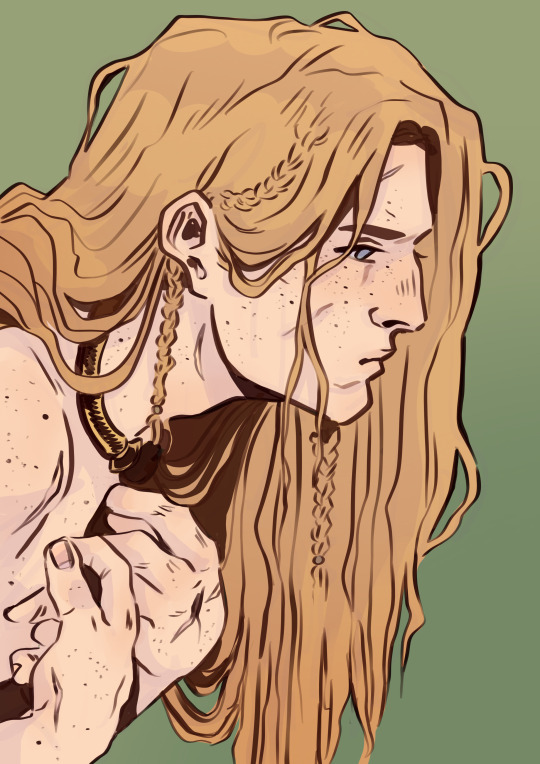
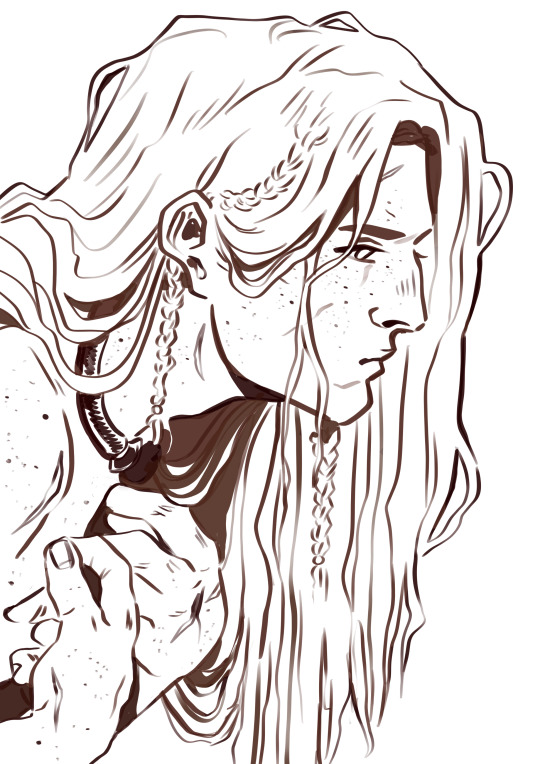

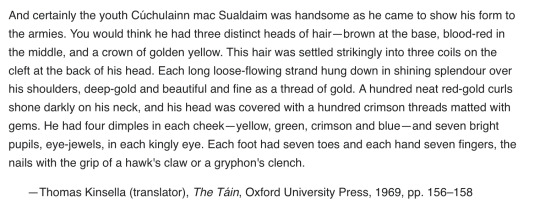
seen so much cú chulainn art I need to contribute
I went with the wild multicoloured blond ombré hair bc it sounds cool
Based on that one Michelangelo sketch with that guy :/
#I don’t know much about Irish mythology so if anything is glaringly wrong plz tell me 😭#cú chulainn#irish mythology#tain bo cuailnge#my art#mythology art#I just thought it was neat that his name means the hound of chulainn okay#Swan upon Leda moment#I’m in my vaguely inaccurate anatomy moment blame Michelangelo ig
158 notes
·
View notes
Text

#dagda#an dagda#illustration#art#digital art#Irish mythology#Irish paganism#doodles#Celtic mythology
137 notes
·
View notes